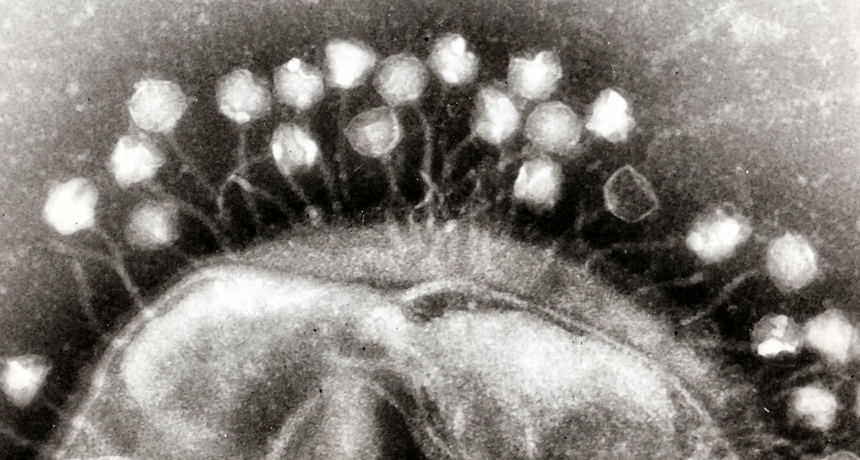
VIRAL ATTACK Viruses called phages (shown landing on the surface of a cell in this transmission electron micrograph) can infect and kill bacteria. Scientists have just found a slew of new defense mechanisms that help bacteria resist such assaults.
Webridge/Wikimedia Commons (CC BY-SA 3.0)






